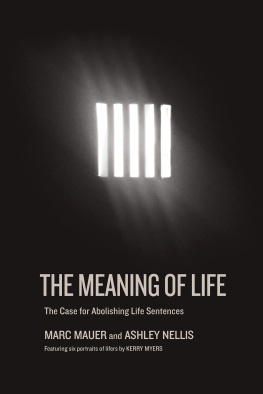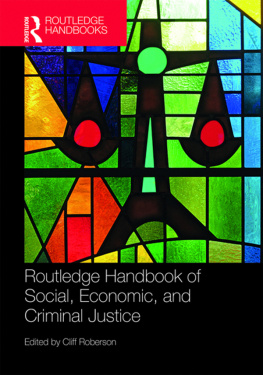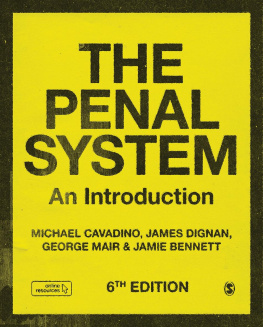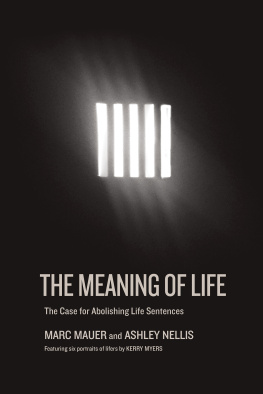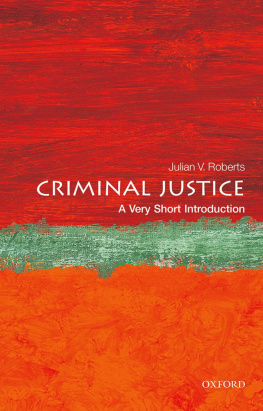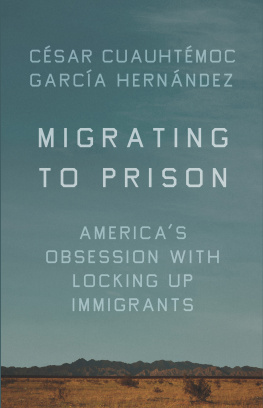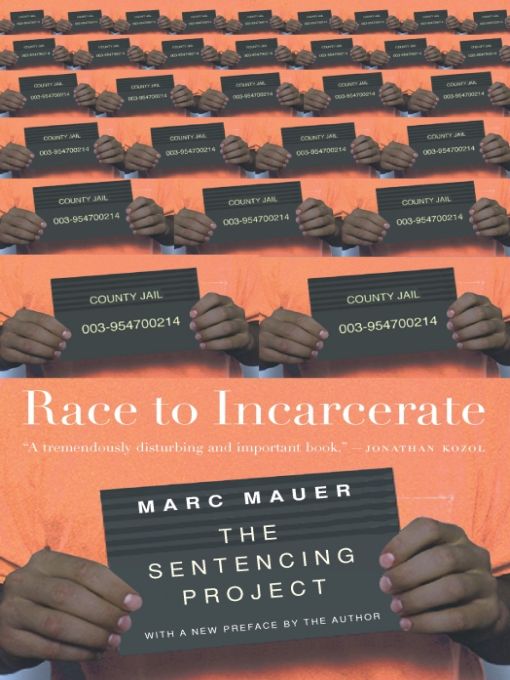Table of Contents
To Barbara, Joanna and Daniel
ACKNOWLEDGMENTS
The idea for this book originated with Joe Wood, my editor at The New Press. He cleverly convinced me that much of the book was already written in my head and all I had to do was to set it down on paper. It turned out to be not quite that simple, but Im grateful for the opportunity he provided and for his sharp editorial guidance throughout the process.
This book in large part reflects my work and experiences with The Sentencing Project over the past decade. One could not ask for a more congenial and encouraging environment in which to pursue ideas and issues. Malcolm Young provided initial encouragement to take on this project and has served throughout as a fine editor, source of intellectual support, and friend. Beth Carter helped me track down numerous references and relevant articles, Pat Garavito provided masterful wordprocessing and editorial skills, Gayle Hebron ensured that all our administrative bases were covered in a timely fashion, and Jodie Minor was always eager to aid in the production process.
The work of The Sentencing Project would not have been possible through these years without the strong backing of private funding sources that were willing to support a small nonprofit organization in its efforts to take on the challenging task of advocating for change in the nations crime policies. For their foresight and encouragement, many thanks in particular to the Annie E. Casey Foundation, the Center on Crime, Communities and Culture of the Open Society Institute, the Edna McConnell Clark Foundation, the John D. and Catherine T. MacArthur Foundation, and the Public Welfare Foundation.
Many friends and colleagues in the field have been most gracious and giving of their time in helping with this project. Jerry McElroy read the entire manuscript and provided all the insightful analyses I have come to expect of him. Others who reviewed various chapters and helped to critique and sharpen my arguments were Meda Chesney-Lind, Angela Jordan Davis, Steve Jonas, and Jolanta Juszkiewicz. Special thanks to Bill Sabol, not only for reviewing some of these chapters, but also for providing keen observations over the years on a variety of projects. My research was also substantially aided by Pam Hollenhorst, who efficiently and skillfully helped to shape the issues for Chapter 9, and by Ted Ashby, who tracked down a variety of bibliographical sources. Other friends aided in my search for resources, obscure references, and historical recollections. Thanks in this regard to Rob Allen, Carol Bergman, Scott Christianson, Walter Dickey, Dick Dieter, Jenni Gainsborough, Judy Greene, Russ Immarigeon, Naneen Karraker, Jan Marinnisen, Bill Nagel, and Dick Scobie for their assistance in this and many other ways over the years. My special appreciation as well to Gil Kline, media consultant to The Sentencing Project, for his astute observations and accomplishments over the years on our public policy projects, and to Michael Castleman, for his guidance on the world of publishing.
Any kind of writing, of course, is the product of ones environment and experiences. I could not have been more fortunate in this regard. Warm thanks to my mother, Mildred Mauer, and my brother, Michael Mauer, for everything theyve given me through the years and for sharing my commitment to social justice. And, on the home front, my wife, Barbara Francisco, and my children, Joanna and Daniel, put up with many dinnertime reports regarding progress on the book and have been my daily sources of inspiration.
PREFACE
In the course of writing this book, I received a call requesting research assistance. My caller wanted to know how many inmates were in the prison systems of a number of different nations in order to determine the total size of the market. The caller turned out to be a researcher for an investment firm, and the market represented the potential for global investment and expansion of privately built and operated prisons. Now that products and profits can be made anywhere around the world, apparently there is no reason for American corporations to confine their thinking about the profitability of crime control to the borders of the United States.
At various times in history, prisoners have been thought of as sinners, deviants, or members of an oppressed class. As we approach the twenty-first century, they have now become mere commodities in the eyes of global entrepreneurs.
While the new century brings with it promises of horizon-expanding technology, it is ironic that the institution of the prison, an invention of the eighteenth century, is not only still with us, but expanding at a rapid rate. Those in the field of criminal justice who seek to develop creative approaches to involving communities in crime prevention must now compete with proposals to reinstate chain gangs and other relics of a time we had thought was past.
This book tries to assess how U.S. society has come to rely on the use of imprisonment to an extent that was entirely unforeseen and even unimaginable just thirty years ago. How is it that our national approach to solving the problem of crime has come to rely so dramatically on the bricks and mortar of the prison at the expense of other responses that would be both more humane and more effective?
For my friends and colleagues who toil in the nations prisons and jails each day, let me say at the outset that this is a book about criminal justice policy, not the individuals charged with implementing that policy. Indeed, many of the corrections officials and prison wardens who run these institutions are dedicated professionals who share a vision of a more humane and effective system of justice, and who often labor in extremely trying circumstances.
This book may be interpreted as a critique of the tough on crime movement that has characterized the nations approach to crime and criminal justice for more than a quarter century. It does present a challenge to that approach, in fact, but only a willful misinterpretation could categorize it as being unconcerned about crime. If we hope to work our way toward a more effective approach to crime and violence, it is incumbent upon us to look at where weve been and to explore where we might go from here. One would hope that in our national debate on crime we could at least all agree that what is being discussed are competing policy proposals and visions of a safer society. This book offers a contribution to that discussion.
PREFACE TO THE SECOND EDITION
In 2003, the U.S. Supreme Court issued a remarkable decision in regard to the three strikes and youre out law in California. The 1994 law, the most far-reaching of its kind, called for a sentence of twenty-five years to life for conviction of any felony following two prior convictions for violent or serious felonies. The two cases before the Court involved one man whose third strike of stealing three golf clubs from a sporting goods store resulted in a sentence of twenty-five to life, and another found guilty of stealing $153 worth of videotapes from a K-Mart store on two occasions and sentenced to fifty to life. The Court, in deferring to the judgment of the California legislature, found that the law did not represent cruel and unusual punishment and let the sentences stand. As a result, California taxpayers will be spending well over $1 million to incarcerate these two men for their low-level property crimes. Such is one outcome of the three-decade-long race to incarcerate.


